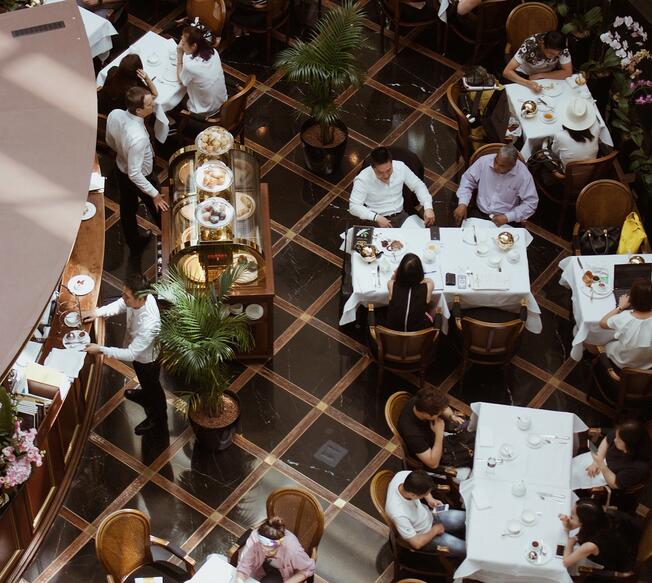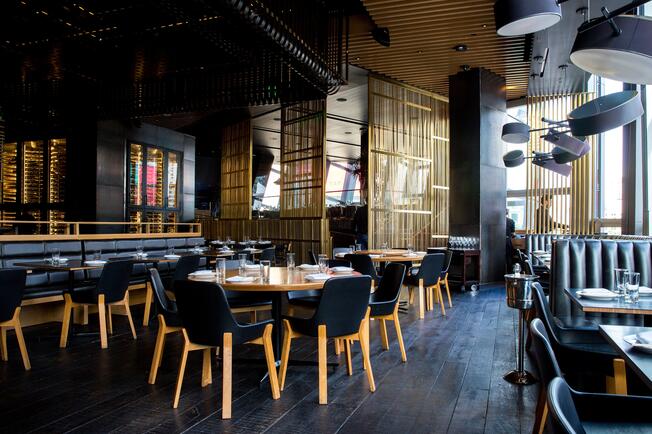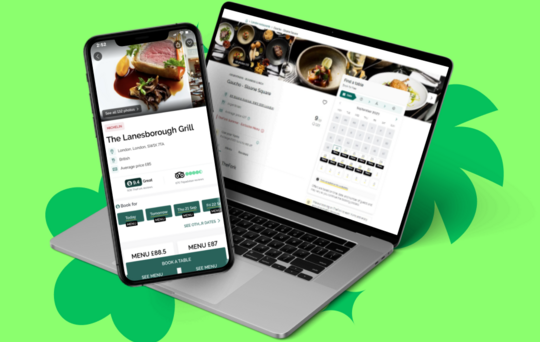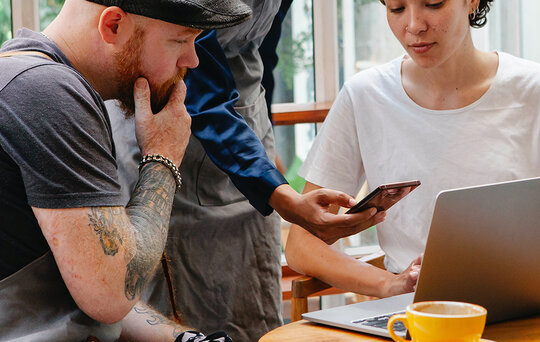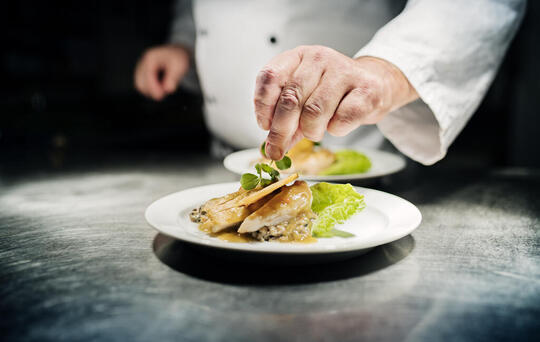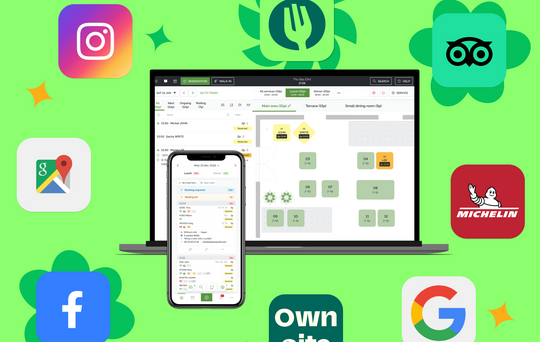What is restaurant table turnover and how to optimize it for higher efficiency
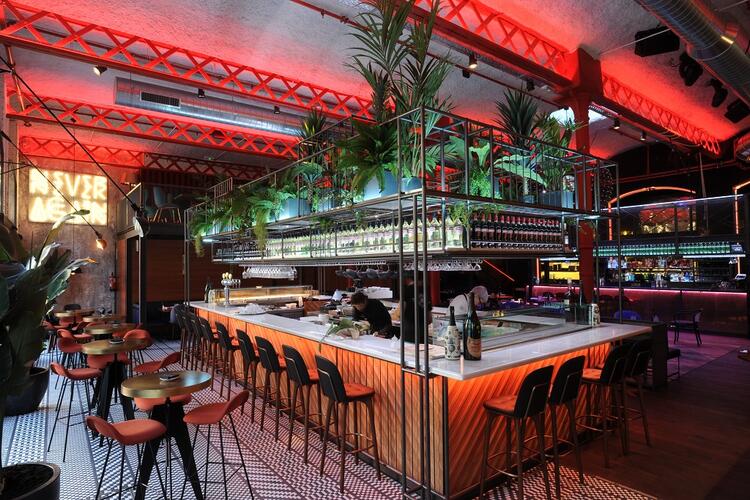
- • What is Table Turnover Rate?
- • Factors Affecting Table Turnover Rate
- • Try TheFork Manager today
- • The importance of dining layout in a restaurant
- • How to calculate table turnover?
- • Increase table turnover with more efficient processes
- • Avoid seating incomplete parties
- • Encouraging guests to free up tables politely
- • Optimisation of dining layout and seating arrangements
- • Empty tables and ever-increasing costs?
What is Table Turnover Rate?
First things first, what is table turnover rate?
Table turnover rate refers to the frequency at which a table is occupied and vacated in a specific period of time, typically measured over a night or during meal service hours. This is a crucial metric for restaurant management as it reflects the efficiency of service and customer flow.
A high table turnover rate suggests that more guests are being served and, as a result, more revenue is being generated. Conversely, a low table turnover rate may indicate service inefficiencies or longer dining times, limiting the number of diners that can be accommodated. By monitoring and optimising table turnover rate, restaurant owners can enhance operational efficiency, improve overall customer satisfaction, and drive higher profitability.
Factors Affecting Table Turnover Rate
A restaurant’s table turnover rate is influenced by several key factors, including the type of service, customer dining times, staff efficiency, reservation management, and various operational elements. So, when it comes to answering the question “what is a good table turnover rate?” it’s important to remember that there is no one-size-fits-all answer.
Type of service matters and impacts average table turnover time. Fast food joints typically see quicker table turnover rates in comparison to fine dining establishments where customers may linger longer to enjoy the experience. To optimise table turnover rate, restaurants should consider adopting a more streamlined menu for quicker meal preparation or implementing timed dining experiences during peak hours.
The time it takes for customers to eat is another critical factor affecting table turnover rate. If guests spend too long sitting down to savour their meal, it reduces the number of parties that can be served across the evening. Try offering smaller portion sizes or recommending appetisers that are easier to prepare but don’t compromise quality.
Staff efficiency is also important. Well-trained, attentive staff can enhance service speed and ensure that tables are cleared and reset promptly. Implementing regular training and communicating clearly with staff can help them work more effectively and efficiently, optimising their time on the floor and speeding up the time it takes for customers to enjoy their meal and head out the food.
Additionally, effective reservation management can help control the flow of customers. By spacing out bookings and timing table reservations, you can maximise your restaurant’s occupancy rates while minimising wait times. That’s where a tool like TheFork Manager comes in handy. TheFork Manager allows restaurants to seamlessly manage reservations, providing valuable insights into peak times and helping to optimise table assignments. With its user-friendly interface for desktop and mobile, restaurant managers can easily track bookings and adjust their strategies, ensuring a smooth flow of guests throughout service.
Try TheFork Manager today
As dining demand rises, understanding table turnover rates can be a true asset in helping to maximise your restaurant revenue and welcome as many diners as possible throughout the day.
Understanding how to calculate and optimise the average table turnover rate can prove a complex undertaking.
Trying to impact turnover rates on the ground can be tricky — rushing or pressuring customers to chow down and get out is never a good idea. However, paying little or no attention to table turnover can lead to an unsustainable decrease in revenue potential and customer satisfaction.
Instead, it’s essential to strike a balance between giving guests plenty of time to enjoy their meal without risking the loss of potential repeat customers to exhausting wait times.
Fortunately, there are some simple, subtle ways to calculate and optimise your restaurant table turnover without compromising customer satisfaction.
The importance of dining layout in a restaurant
The dining layout of your restaurant is a significant feature you must consider to enhance your service efficiency and table turnover. How you arrange tables overtly impacts staff movements, affecting the service of every guest.
The dining room layout should be emblematic of the type and style of establishment you run.
- A fast-food restaurant can arrange tables linearly to facilitate quick seating and minimal wait times.
- A fine dining establishment might benefit from a more spacious and airy layout, as its purpose is to make guests feel special.
- A family restaurant often opts for circular or square layouts, which allow better communication between guests and staff.
An efficient seating arrangement and a well-structured restaurant will help your business maximise table turnover while ensuring a complete and satisfying customer experience.
How to calculate table turnover?
On the surface, calculating your average table turnover rate is fairly simple: just record the number of guests you seated in any given dining window.
You can calculate by day or dining time, but the latter is more specific and efficient.
For example
To calculate the average table turnover rate during dinner hours, divide the number of dining parties seated by the number of tables at the end of the dinner period.
If you have seated 30 parties and you have 10 tables, your table turnover will be 3.
Creating table turnover goals as a measure of success can produce varied results, as no two dining experiences are the same.
Calculating the turnaround time is also useful for determining the length of time your guests might need in your restaurant. The table turnaround time is how long a diner spends in your restaurant, from the moment they sit down to when they leave.
Take the time to analyse this data and determine how dining times may vary to better understand your average table turnover rate, successes and future achievable goals.
However, remember that this is not a fixed value and can always be optimised to ensure the best possible results and revenue.
Increase table turnover with more efficient processes
To increase your average table turnover rate, streamline processes.
Streamlining processes will improve restaurant management, enhance overall customer satisfaction, secure your seating rate, and improve the quality of your service.
Increased staff awareness for quicker response times
Always schedule staff members to match the demand. As soon as guests arrive, team members must be there to greet them proactively.
It’s crucial that there are no lingering wait times during service, as this dead time can affect the table turnover rate from your end.
As a golden rule, guests should be seated within 1–2 minutes of arrival and orders taken 2–3 minutes after seating.
Quick response times and efficient guest reception will guarantee a smooth customer experience, optimise table turnover, and increase overall guest satisfaction.
Going digital
Many restaurants have already taken advantage of digital menus and digital payment solutions — and for good reason. These additions can play a key role in improving table turnover.
When customers have access to your menus straight away — sometimes even before being seated — they are much more likely to peruse your offerings beforehand and order quickly.
Digital mobile payment solutions are great tools for integrating seamless payment options in your restaurant. With these solutions, guests won’t have to wait for payments to be processed, allowing them to settle their bills quickly. This is particularly beneficial for those who are in a rush or when staff members are busy, ensuring customers can leave on time without any hassle.
Avoid seating incomplete parties
Have you ever tried to seat guests before everyone in their party has arrived? If so, think twice—it could be catastrophic for your table turnover!
Whether it is an online reservation, a walk-in, or a party without a reservation, avoid seating individuals prematurely before the complete group has arrived. This will negatively impact table turnaround and turnover.
Be sure to inform customers that you can only seat complete parties, especially if operating at your maximum capacity. This approach helps maintain efficiency and ensures a smoother dining experience for everyone involved.
Encouraging guests to free up tables politely
While you never want to rush your guests or be pushy, sometimes customers don’t realise how much time they have spent in the restaurant after finishing their meal.
During peak times, you can offer your guests bar seating (if you have some available) or check in to ask if they have finished or would like to order something else.
As long as you remain high-spirited and kind to your guests, they will always be understanding. These subtleties will allow the diner to realise that they may be all set to head home independently.
Optimisation of dining layout and seating arrangements
Another strategy when it comes to how to increase table turnover rate is to make sure your dining room layout and patio utilise all available space. Additionally, it’s important to seat parties appropriately according to size.
Even when your occupancy rate is not at its peak, try to keep couples at tables with two seats. You never know when demand could pick up throughout the day. Try to be prepared to greet a group of four people at any time.
By leveraging digital seating optimisation, like that available on TheFork Manager, you can help parties that make reservations secure their spot while also ensuring your seating plan is efficient and flexible enough to view and adjust in real time.
Make the most of this advice and other restaurant-specific tips and tricks to optimise your table turnover. Once you understand how to calculate and optimise table rates, you can look forward to a smoothly flowing restaurant and increased revenue.
Empty tables and ever-increasing costs?
- What is Table Turnover Rate?
- Factors Affecting Table Turnover Rate
- Try TheFork Manager today
- The importance of dining layout in a restaurant
- How to calculate table turnover?
- Increase table turnover with more efficient processes
- Avoid seating incomplete parties
- Encouraging guests to free up tables politely
- Optimisation of dining layout and seating arrangements
- Empty tables and ever-increasing costs?

